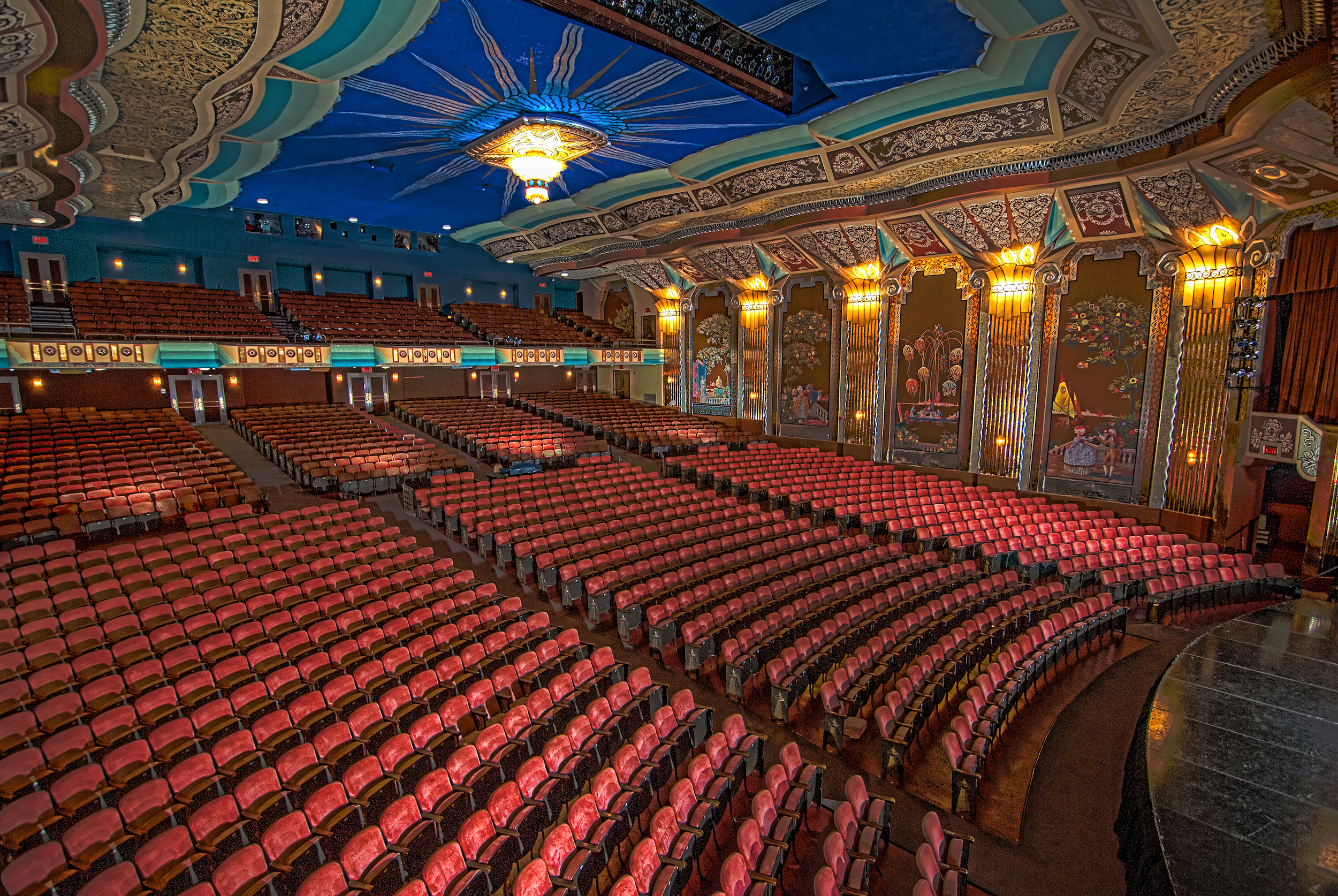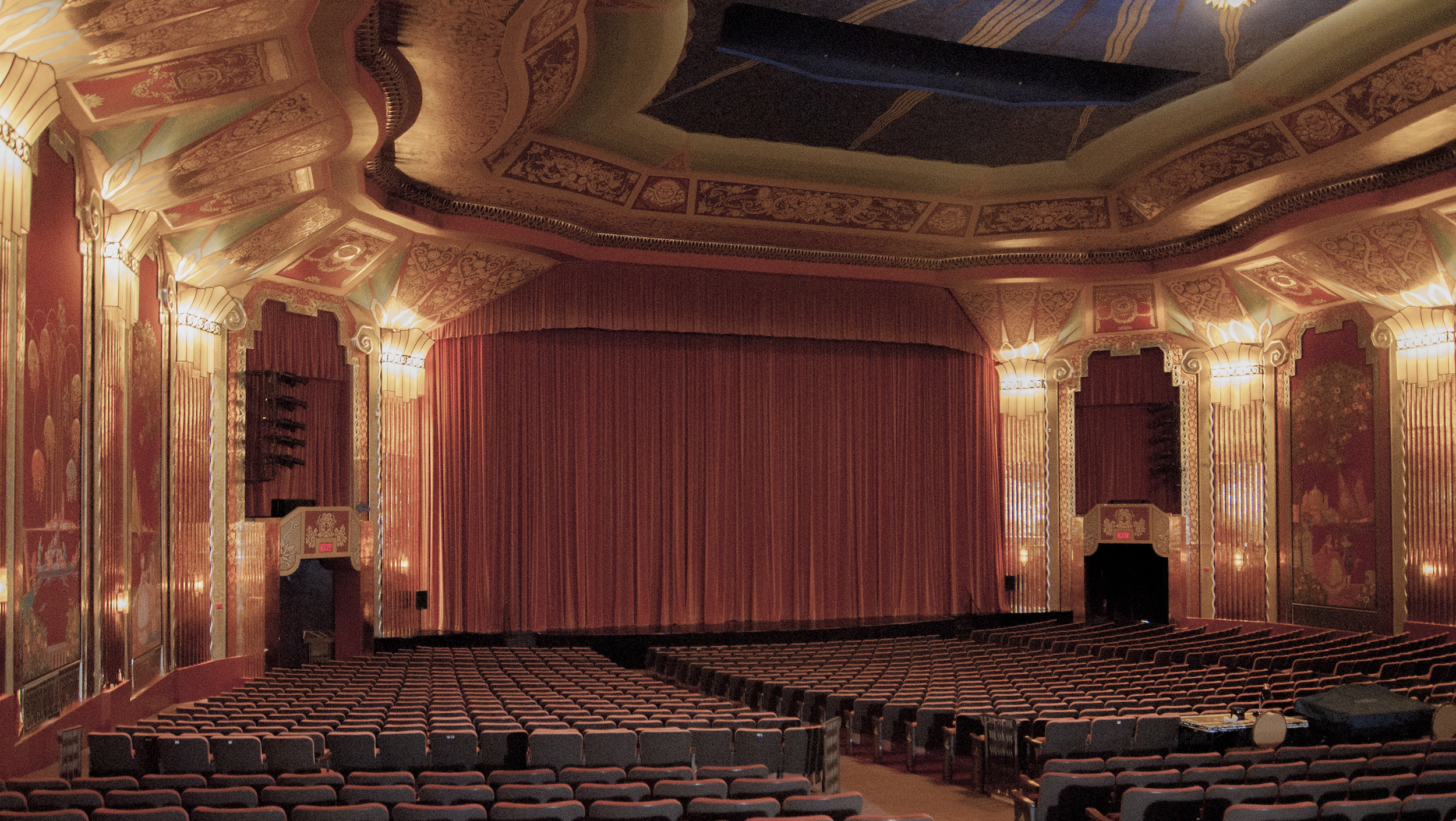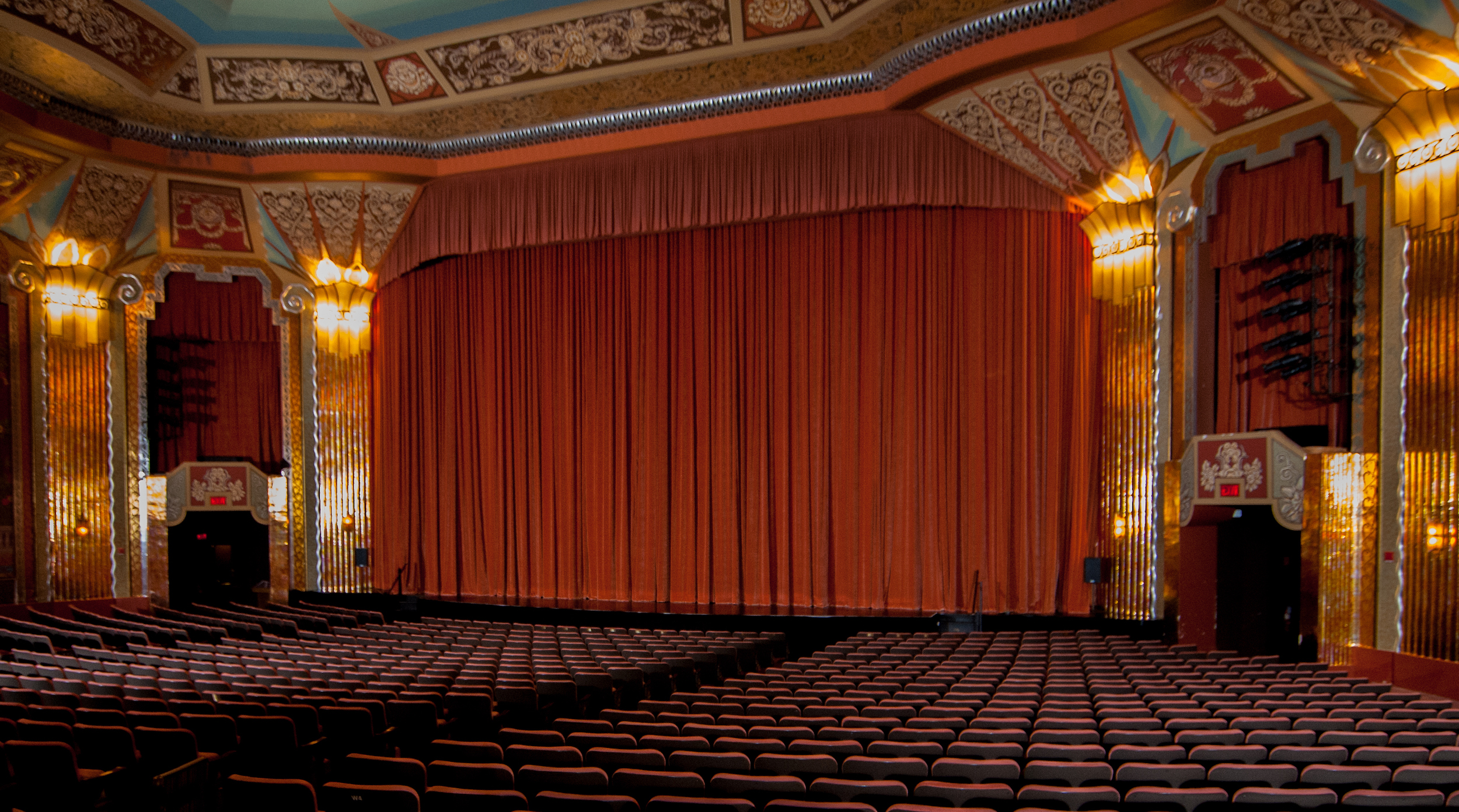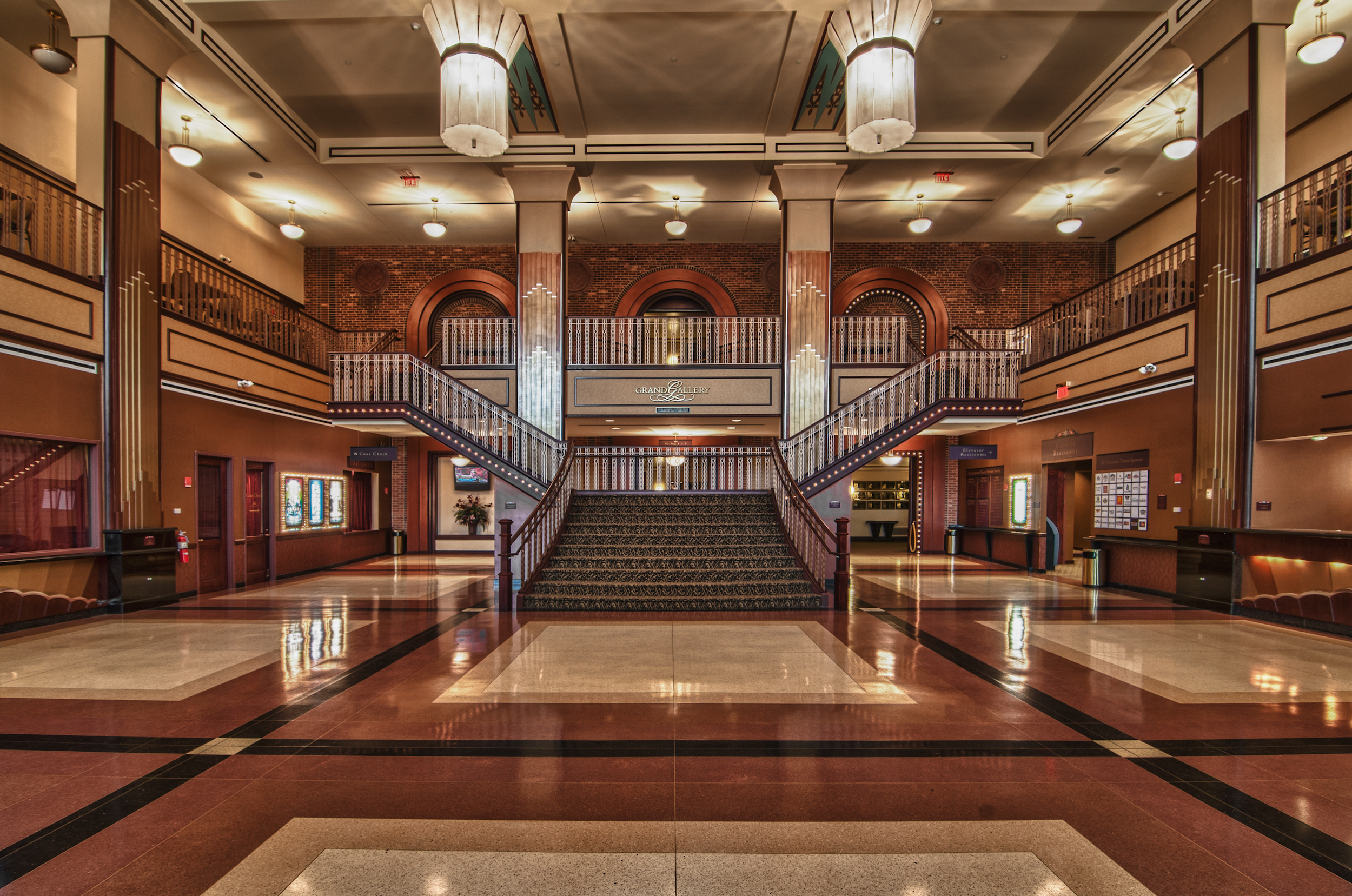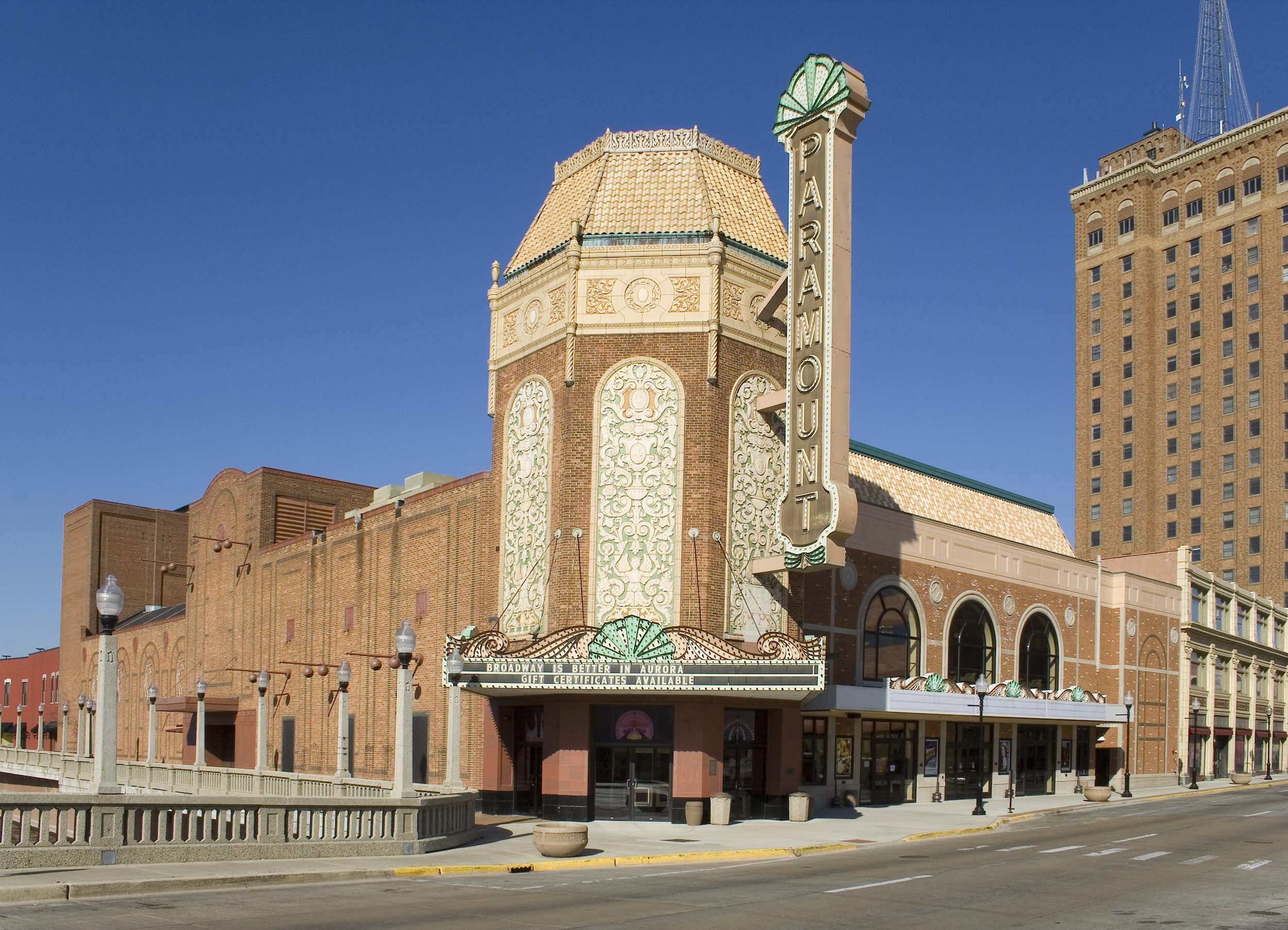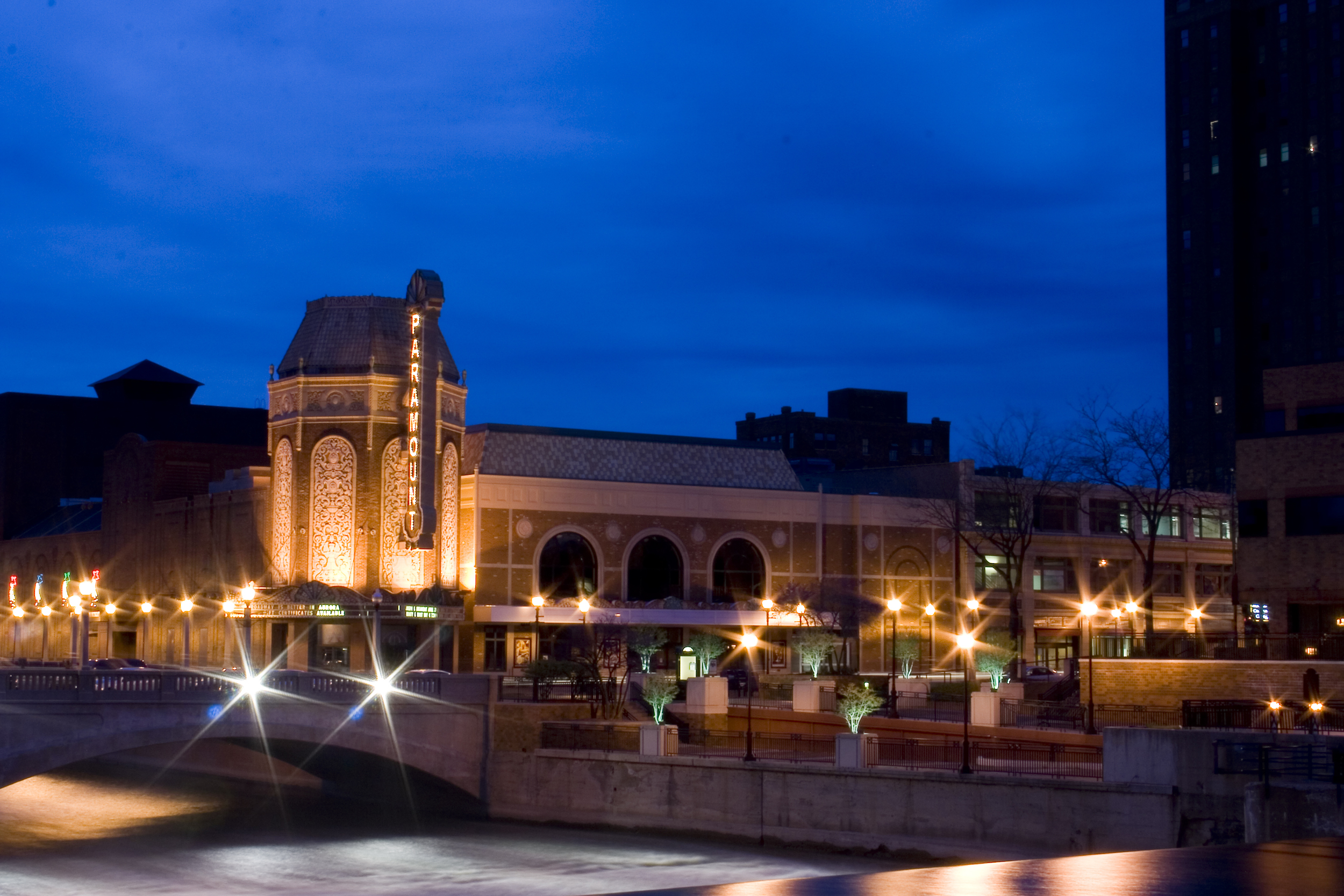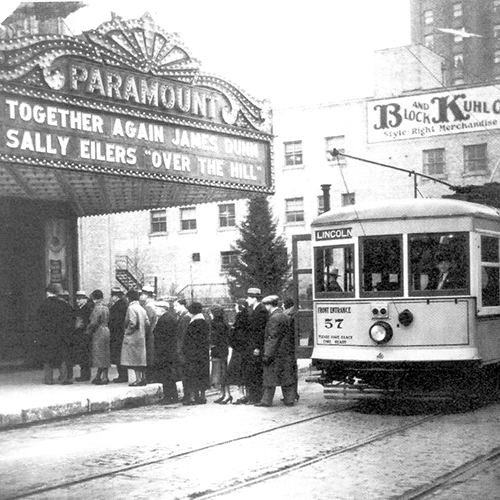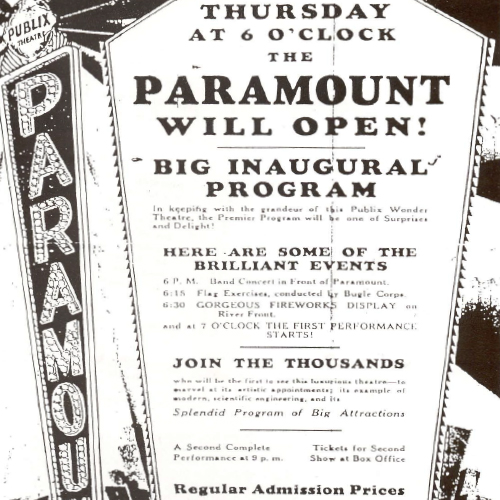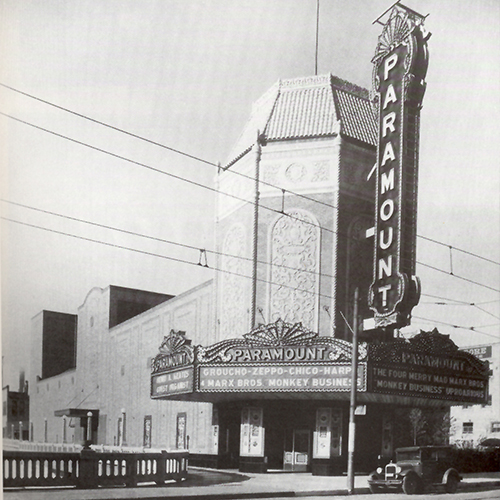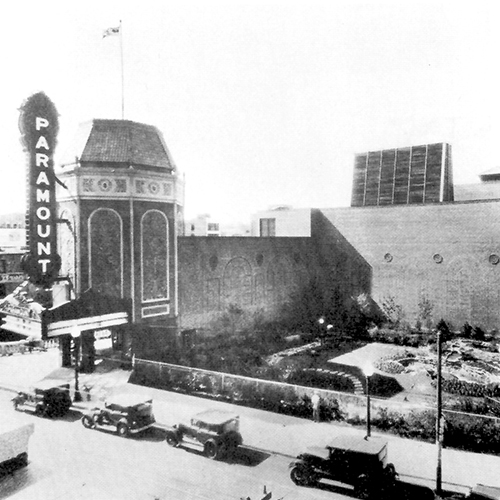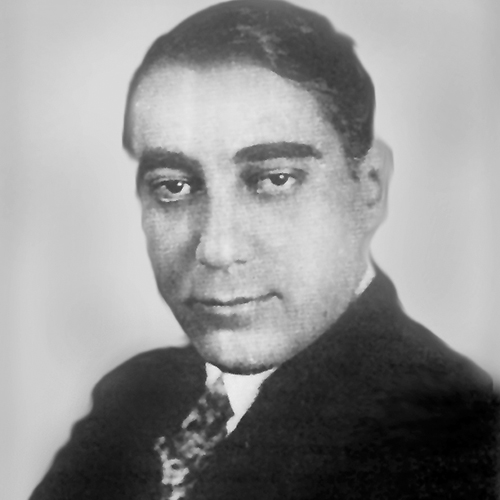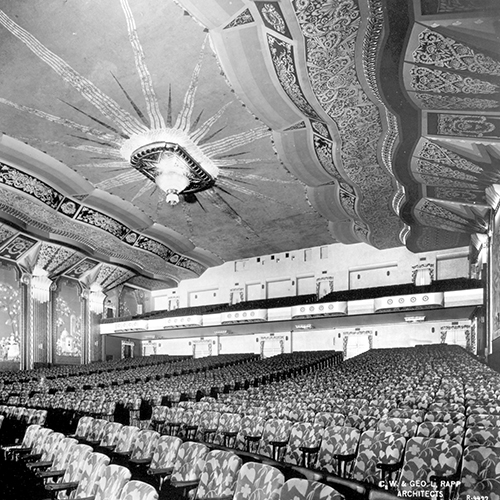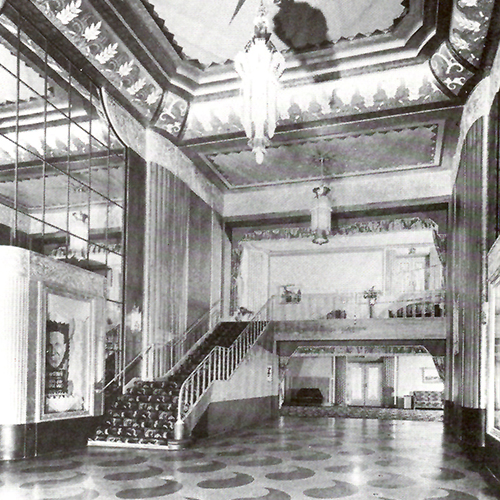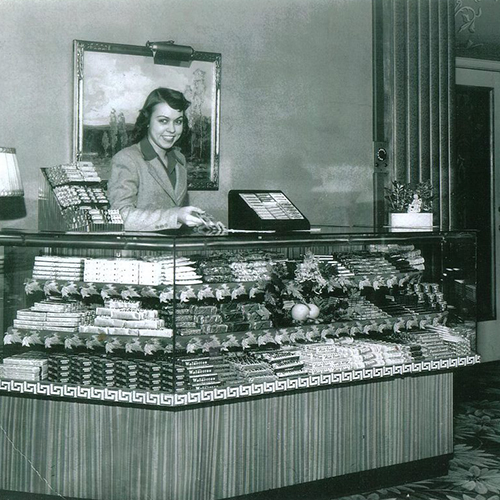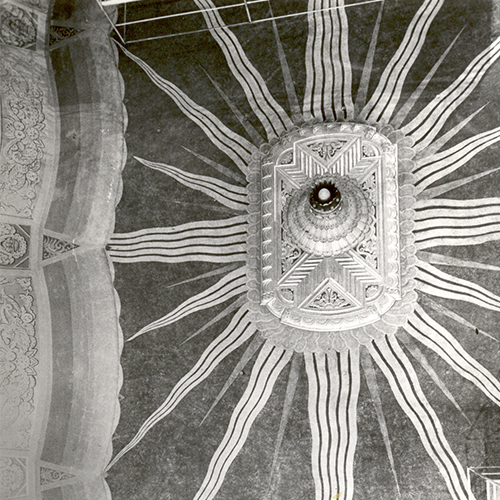Mission & History
Mission
The Aurora Civic Center Authority is committed to being a defining catalyst for personal and community transformation by:
- making the performing arts accessible for every age and socioeconomic background,
- introducing the magic of live theater across generations to encourage expansive imaginations and broad views of people and the world,
- and contributing to the future stability and growth of Aurora’s downtown.
History
Building The Palace
Aurora has a rich history as a center for entertainment. At the turn of the 20th Century, vaudeville and silent films could be seen in many local venues, including Dreamland, The Majestic, The Strand (formerly the Grand Opera House) and The B.
In 1915, J.J. Rubens and other far-seeing theatre owners formed the Aurora Theater Company—a power group that guided Aurora’s moving picture business. New theatres were needed to accommodate the movies’ transition to “talkies.” Rubens, on a trip to Italy, began envisioning plans for a new theatre with a Venice theme—The Venetian. He called upon C.W. and George L. Rapp, nationally known architects of movie theatres, to be the designers. Combining Rubens’ Venetian theme with the fashionable Art Deco influence of the 1920s and early 1930s, Rapp & Rapp designed a breathtaking palace…what David Naylor referred to in American Picture Palaces – The Architecture of Fantasy as “their best Art Deco theatre.”
In 1930 however, prior to construction, Aurora Theater Company was sold to the Paramount-Famous-Lasky Corporation. Although it retained the Rapp & Rapp design, the theatre was renamed The Paramount, rather than The Venetian. The $1 million dollar building opened on September 3, 1931, to wonder, excitement, glamour, laughter and music. An organist was flown in to play the Wurlitzer, local dignitaries attended the opening, and telegrams arrived from Paramount Studios stars such as Claudette Colbert, Sylvia Sydney, and Janet Gaynor.
In addition to the movies, The Paramount also offered vaudeville, concerts, sing-a-longs and circus performances…all inside Illinois’ first air-conditioned building outside of Chicago. Acoustics and sight lines had been so well designed that there was not one bad seat in the house. The luxurious theatre gave its patrons a brief respite from the troubles of the Great Depression.
The Decline
After 40 years of serving Aurora and the surrounding communities, age began to take its toll. Dirt and grime covered the walls, and beautiful murals, upholstery and curtains had become tattered and torn. In 1965, the Aurora Civic Center Authority and the Aurora Redevelopment Commission (ACCA/ARC) were established, heralding the beginning of downtown redevelopment in Aurora, and in 1973 the state of Illinois established the Civic Center Support Program as a means of funding designated cities towards the revitalization of their downtown areas. ACCA/ARC applied for and received funds of $15 million – $4.5 million from general revenue bonds issued by the city, and $10.5 million from state race track revenue.
The Paramount was open continuously until 1976 when ACCA purchased it from the Plitt Corporation. Plans for restoration began immediately and the firm of D’Escoto and Associates was hired as construction manager. Conrad Schmitt Studios were commissioned to restore the interior decor to its former grandeur. Working from black-and-white photographs dating back to 1931, obtained from the Theatrical History Society, Schmitt artisans and craftsmen gutted the interior and began restoration.
The Restoration
The eight hand-painted murals were in such poor shape that they had to be replaced. Each mural was traced and repainted on flame retardant, silk-like fabric and returned to its original position. The warm burgundy, coral, and peach colors of the panels were used as the primary color scheme for the renovations, including the reupholstered original seats. Old veneer and wallpaper were removed and replaced; broken plaster areas were repaired and repainted. The fluted columns that separate the murals were made from plaster, as were most of the surfaces under the decorative work, and were originally clad in German gold leaf. This covering, too expensive to duplicate, was replaced with foil that approximated the original look.
The artwork decorating the ceiling was restored using old photographs as references, and by creating stencils traced from art that was undamaged. A mere 20 percent of the ceiling needed repainting, the other 80 percent needed only cleaning and retouching. Fortunately, most of the Paramount’s interior just needed touching up rather than replacing.
Paramount Today
Paramount continues to provide world-class entertainment—including dance, music, Broadway-caliber theatre, and children’s programming—for an annual audience of 350,000 patrons from over 250 communities. Over 40,000 of those patrons are proud to be Paramount Broadway Series subscribers. In addition, we’ve expanded operations with the recently-opened Paramount School of the Arts and are currently in the process of renovating Copley Theatre for our upcoming Bold Series, a provocative new theater adventure. At our sister venue, RiverEdge Park, we welcome well over 100,000 patrons each summer to enjoy some of the best artists in live music, including KISS, Steve Miller Band and much more. Paramount also hosts free community events, $1 Classic Movie Mondays and its opulent interiors provide a spectacular backdrop for private functions such as wedding receptions or corporate galas.
PARAMOUNT TOURS
Tours of the historic Paramount Theatre are available. Reservations are required and can be made by calling (630) 896-6666. $5 per person.

